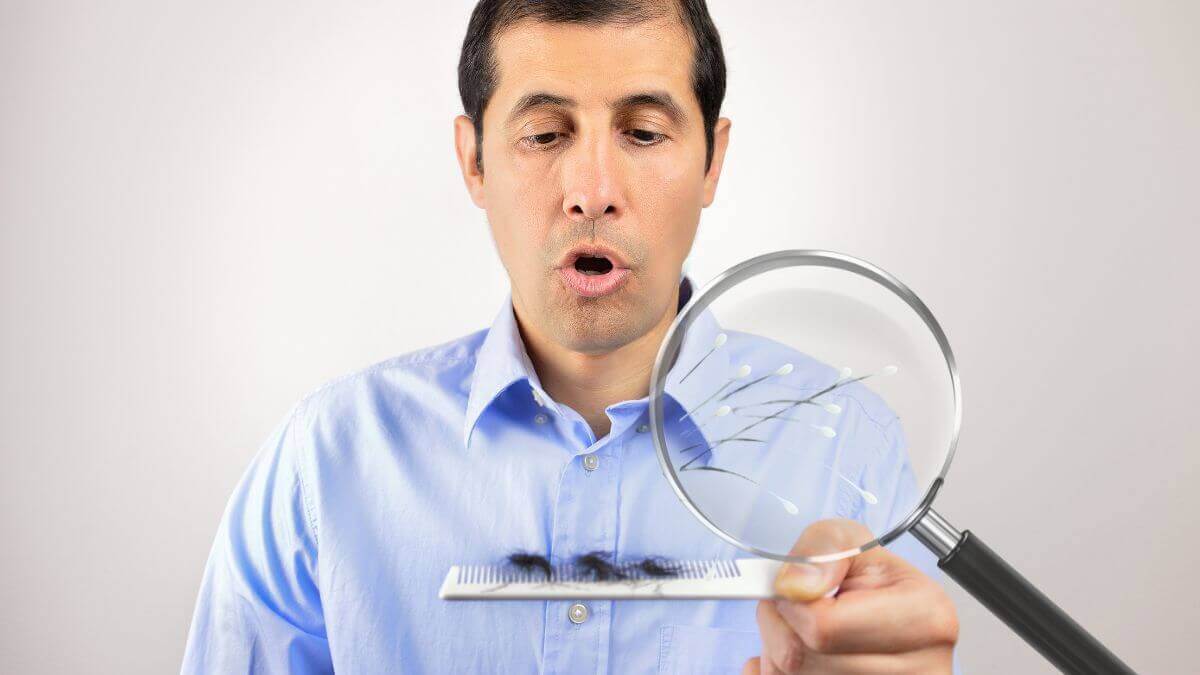Seeing hair in the sink is unsettling, but seeing hair with a distinct white root or bulb at the end?
🚨 That might send panic levels through the roof!
You may start to think:
“Is the whole hair gone? Won’t it regrow again? Did I permanently lose a hair?”
Take a deep breath. That white bulb is usually NOT what you fear.
What is that white bulb?
The white bulb is a keratinous lump that forms at the end of a hair during the telogen (resting) phase of hair growth. It’s simply a protein (keratin) cap that holds the hair in place before it sheds.
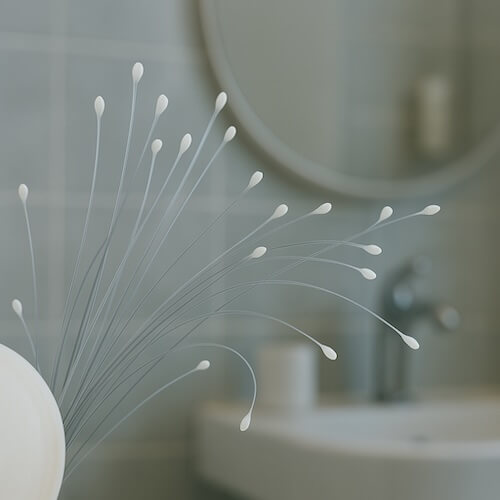
It is also called “telogen club” or “club hair.”
Your hair follicle is a much more complex structure deep under your scalp. That’s why in a hair transplant, 0.8-0.9 mm punches are required to take out the whole hair complex.
The white bulb indicates that the hair has reached the end of its lifecycle and entered the shedding (exogen) phase.
To explain the formation of the hair club more clearly, let’s go over the hair growth cycle phases:
Hair Growth Cycle
- Anagen (growth): Lasts 2–7 years, ~80–90% of scalp hair is in this phase.
- Catagen (transition): ~2–4 weeks; growth stops, follicle shrinks, white bulb starts to form late in this phase.
- Telogen (resting): ~2–3 months; club is fully formed, hair remains until pushed out.
- Exogen: Shedding phase when the white bulb-attached hair falls out, new hair starts growing from the same hair follicle beneath.
So, why do you see white hair bulbs on every hair you lose?
As I explained before, it would be abnormal not to see white hair bulbs on lost hairs. It’s a part of its normal growth.
However, you may sometimes experience increased hair loss, especially during stressful periods. The stress or shock may induce such a period.
Hairs are susceptible to such stress or shocks and start to enter the telogen phase (up from ~10% to ~70%). Therefore, you see more hair loss with white bulbs.
Common stress, shock triggers are as follows:
- Emotional trauma, major surgery like hair transplantation, serious illness (like COVID-19), accidents.
- Hormonal Shifts: Childbirth, menopause, stopping birth control pills, thyroid disorders
- Nutritional Deficiencies: Lack of Iron, Vitamin D, Zinc, B Vitamins (like Biotin B7), and Protein. Crash diets or rapid weight loss are big triggers.
- Certain Medications: Blood thinners, some antidepressants, beta-blockers..
In addition, itchy scalp, dandruff, or seborrheic dermatitis can cause inflammation on the scalp and push hairs into the telogen phase, causing increased club hair shedding.
ℹ️💡 We normally shed about 50–100 hairs daily, often with white bulbs. So it’s perfectly natural to find bulbs even on very short, baby hairs.
Is the Follicle Getting Ripped Out? Will I Go Bald?
No, the white bulb at the end of your fallen hair is not the actual follicle; the follicle stays in the scalp. Only the hair shaft detaches.
Follicles remain intact and can produce new hairs.
For a complete hair follicle to be removed, you’d need serious trauma (like aggressive pulling), often accompanied by serious pain, bleeding, or scarring.
In a hair restoration surgery, such a trauma is done on scalp; a relatively small/medium-sized skin part is required to be removed in order to completely remove the hair follicle.
You can see the donor area (back of the head) of my patient right after the hair transplant operation.
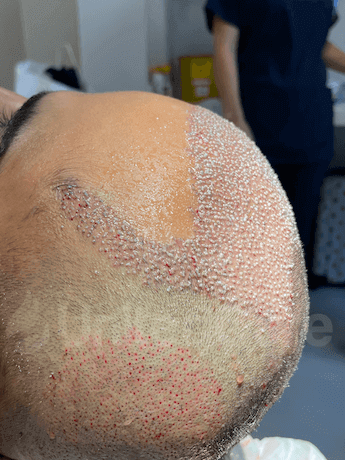
The Bottom Line: White Bulb = Usually Normal Shedding
As I already indicated above, finding the white bulb is just your hair’s natural way of saying its lifecycle is complete.
It’s also not an indicator of hair loss, since as a part of its lifecycle, we lose 50-100 hairs every day. It is required for a new hair to regrow from the same follicle.
However, if you’re concerned about the amount of hair you lose every day, feel free to contact me or just see your dermatologist in your town.
In addition, if your hair loss is serious and you start balding, there is a very affordable and feasible solution: hair restoration surgery. It is done in a day and can mostly cover your bald spots.
Let me show you a before-and-after photo of my patient who has chronic androgenic alopecia (male pattern hair loss) and wanted a permanent solution:
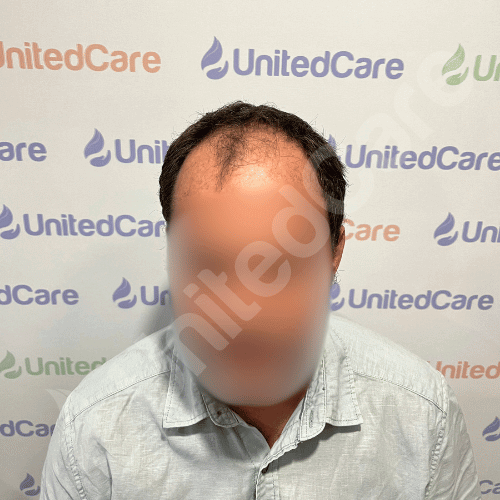
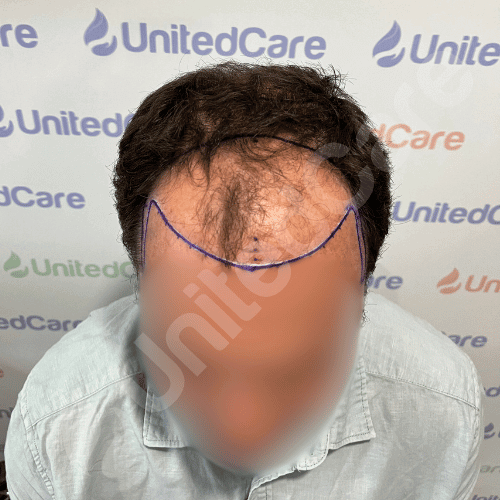
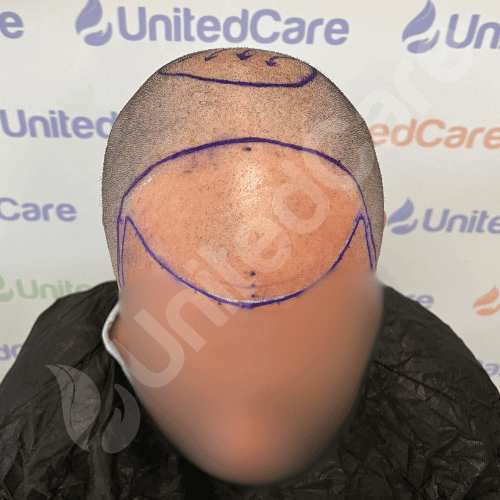
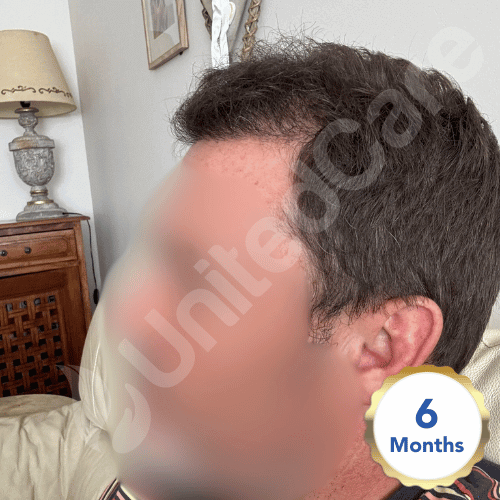
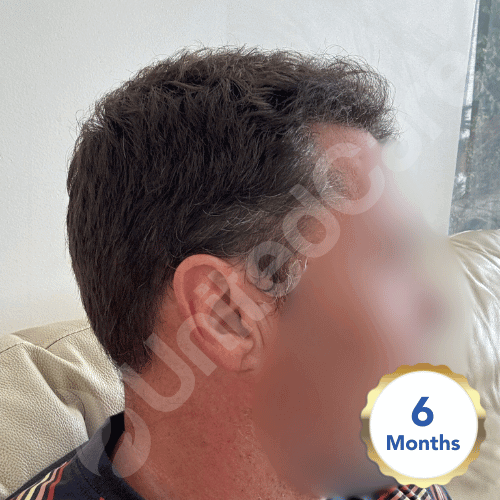
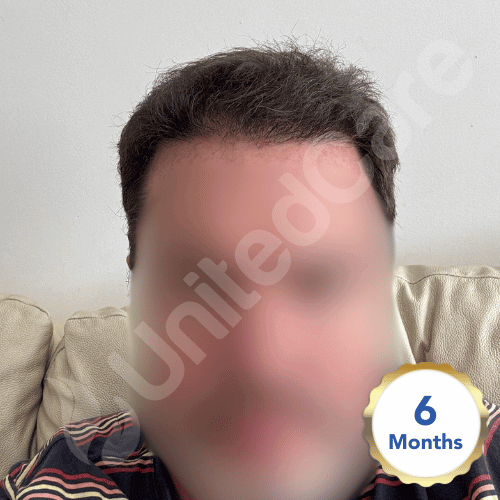
At UnitedCare, I start your hair transplant journey with a free, one-on-one consultation to see if you’re a good fit for the procedure.
💊 If you are, we use a holistic approach combining advanced techniques and bio-enhancements to give you the best possible graft survival.
Once you’ve chosen the method that suits you, we begin the treatment with the highest level of care and precision. 💉
If you’re curious about whether you’re a good candidate or just want to know the cost at my clinic—or even just want to chat—don’t hesitate to reach out.
Losing too many hairs with white bulbs?
Restore your hair with a Dermatosurgeon.
Frequently Asked Questions (FAQs)
Every hair I lose has this white bulb on its end – does it mean the follicle ripped out?
No, the white bulb is not your follicle. It’s just the club hair cap, formed when hair stops growing and rests. The real follicle stays under the skin and will grow new hair later.
Why do my hairs always fall out with a white little root at the tip?
This usually shows that hair has finished its cycle and naturally sheds. If you see more than normal, maybe stress, hormone change, or dry scalp push many hairs into the resting phase.
What to do for hair loss with white root?
It’s 100% normal. Try a calm life, good sleep, and a balanced diet. It will help resting hair follicles to grow new hairs. If you find big thin areas or bald spots, you can consider a hair transplant.
